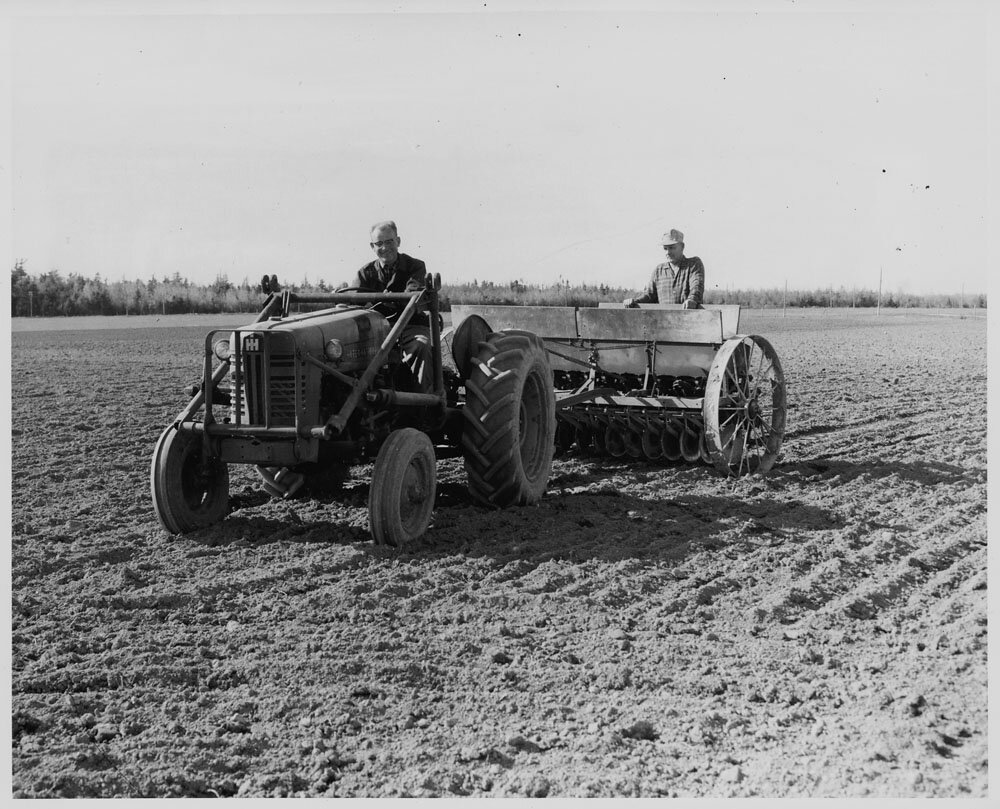Volume 40.4 Disperse

Text by Miriam Ho and Aisling O’Carroll
At first glance, the notion of dispersal—etymologically composed of dis- “apart, in every direction” and spargere “to scatter”—seems to inherently contradict what devices do. Devices typically filter and focus matter towards a specific purpose, but dispersal, which moves “in every direction,” is essentially wayward and unpredictable. Certainly, devices have been designed to disperse: the seed drill and pigeon parachutes on the following pages exemplify this capacity, one to generate new growth, the other to communicate intelligence information. These devices distribute materials or information more efficiently across areas and geographies that are less accessible to humans.
And yet, as we noted in v.40: Devices (Spring/Summer 2019), to devise is to deviate, to be devious—and as devices proliferate, their trajectories can surprise us. The pieces in this section return to the idea of the publication as a distribution device: making something public opens it up to disruptive capacities. All of the pieces here deploy devices in ways that subvert their original aims. Borne out of a response to current issues of social inequality, these disruptions show how devices can adapt to shifting social mores. They offer an optimistic view that devices that may have been created under colonial, patriarchal, or capitalist cultural contexts can evolve to become better tools for democratic representation.
Image 1 | British container created for parachuting a carrier pigeon during military operations, 20th century. Photograph by Emilie Cambier, © RMN-Grand Palais / Art Resource, NY
Throughout World War I and World War II, carrier pigeons, also known as homing pigeons, were used in military operations to deliver intelligence messages. The birds’ speed, endurance, flight altitude, and homing ability made them a reliable communication channel, with higher chances of making it back across enemy territory than an aircraft or other vehicle. In WWII, the British dropped pigeons behind enemy lines to collect information from allies and secret operatives. The pigeons were packed individually into containers fitted with parachutes and carried instructions directing their finders to provide information about the enemy’s location and operations before releasing the pigeon to fly back home across the English Channel. Following WWII, over thirty pigeons were awarded medals for their bravery and service.
Image 2 | Adolphe Haas and his employer, Abbott Johnston, of MacDougall Settlement in the Province of New Brunswick, operate a tractor-drawn combination fertiliser and grass seed drill on Mr. Johnston’s 325-acre farm. Haas was one of a group of twenty young Belgian farmers who spent nine months in Canada to gain experience in Canadian farming methods, 1930–1960. Image courtesy of Department of Manpower and Immigration (Canada) / Library and Archives Canada
The combination fertiliser and seed drill provides mechanised sowing of seeds and dispersal of manure to controlled depths and with even distribution. While variations of the seed drill have been used in agricultural work since several centuries BCE, their use in Western agricultural practices became standardised with manufacturing advances in the late nineteenth century.
In this pamphlet:
Scan the World by Jon Beck
Empathetic Design by Rhiannon Williams | Feminist Internet
A Plan for All Londoners? by Chi Nguyen
Exhausted Geographies by Abeera Kamran, Zahra Malkani and Shahana Rajani







